










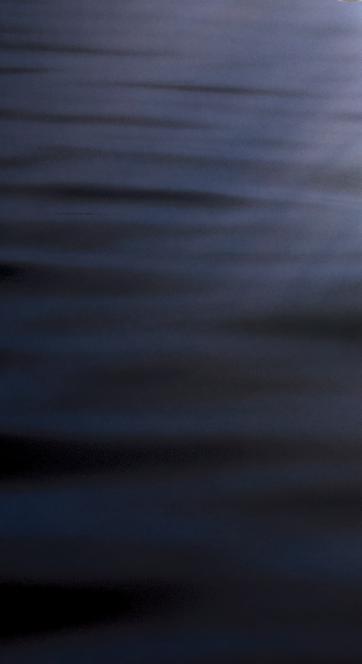



DRS4DNXTDRS6ANXT


You’re looking at it! Furuno’s award-winning Radar gives you clarity & target separation like no one else. Don’t take our word for it. See for yourself. Scan here, and we’ll show you!



























Do you love boating? Then you know how fun and relaxing it can be on the open water. But you also know that things can go wrong sometimes, like storms, accidents, theft, or injuries. That’s why boat insurance is so important. Here are some reasons why.
• Boat insurance can help you pay for damage to your boat, or to other boats or docks, up to specifed limits.
• If you borrowed money to buy your boat, your lender may require insurance. And if you want to explore different places, some marinas or waterways may ask you to show proof of insurance.
Progressive Casualty Ins. Co. and af fliates Coverages subject to policy terms and conditions.
• Boat insurance can also come in handy if you need an on-water tow, jump start, or fuel delivery with optional Sign & Glide® coverage. And if your boat sinks, boat insurance can pay for the cost of removing it from the water (if removal is legally required).
Get boat insurance from Progressive and enjoy the peace of mind that comes with it.
Scan to get a quote in as little as 4 minutes
Go to progressive.com to learn more.
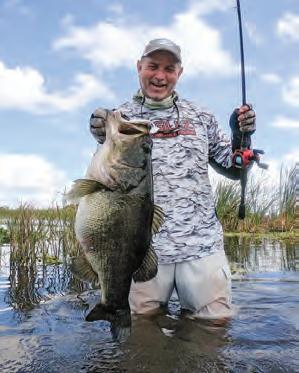

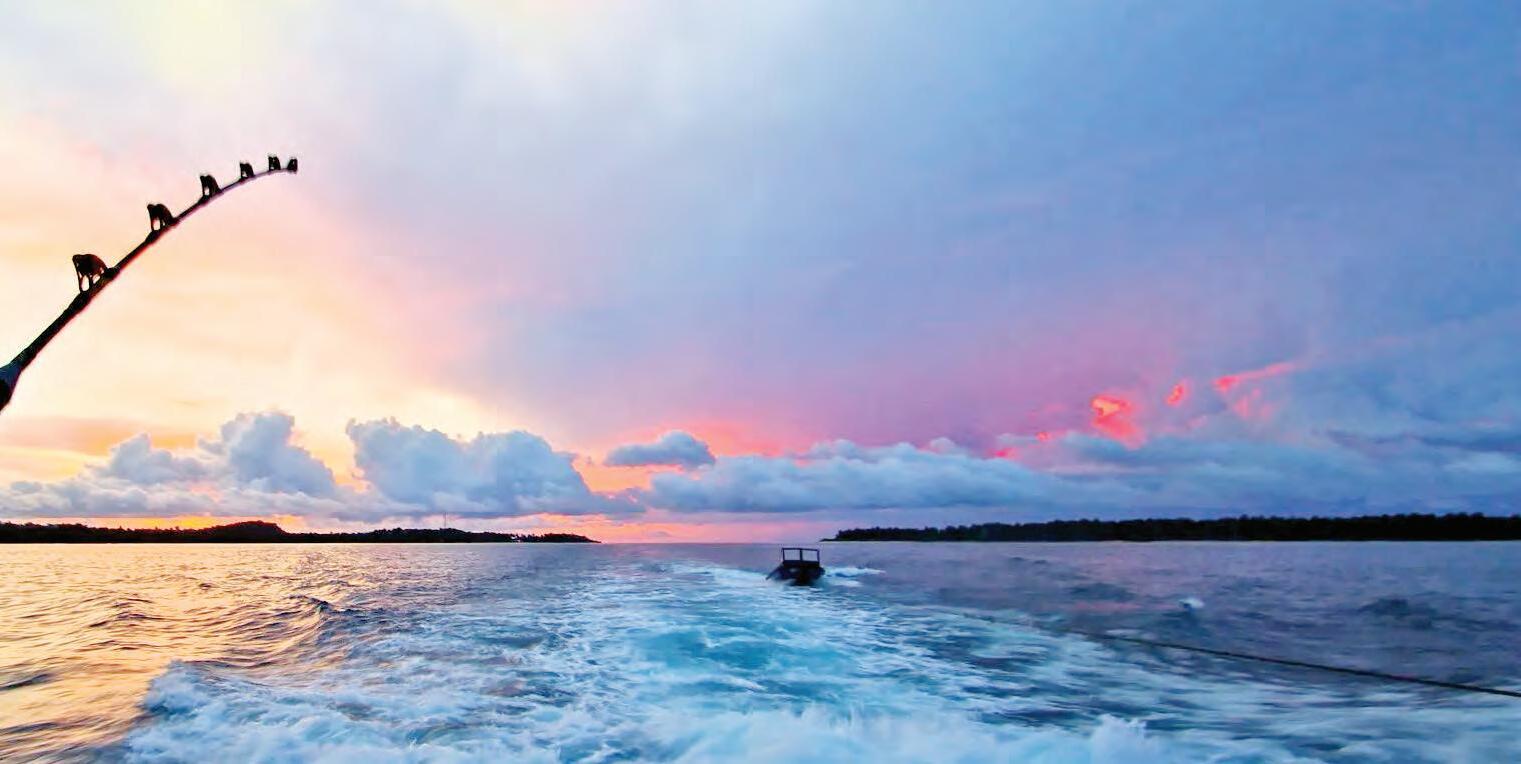

























Trout don’t grow huge on a diet of insects alone, so Budkey fshes 2- to 3-inch-long bait lures to take advantage of the carnivorous tendencies of big fsh. Tese fsh have good eyesight, so he fshes 4-pound-test and said light line can be the diference between catching dozens of fsh or nothing at all.
Now… battling 10-pound trout in current with light line is tricky, to say the least.
“You really have to wear them out. you all the way down the creek and back up it, jumping and thrashing,” Budkey said. “If you try to muscle them, they’ll break you o

Part-time guide Stephen Budkey catches a lot of outsized trout fshing the streams of western Pennsylvania. Much of his success with giant 6- to 15-pound rainbows and browns has to do with location, but he also uses some interesting tactics that specifcally appeal to large fsh.
Te setting is on Lake Erie tributaries. Tese streams vary in size, but generally Pennsylvania is known for smaller fows. Te key to their productivity is the lake. Lake Erie feeder streams experience steelhead runs a lot like the rivers of the Pacifc Northwest. Fish grow large gorging on baitfsh in open water before pushing into tributaries in early fall to spawn. Te lakerun rainbow trout in this migration are called steelheads, and there are bruiser brown trout that run up out of the lake, as well. Budkey also has access to a stretch of privately managed tailwater, which is an obvious target-rich environment for very large trout. Regardless of where he’s fshing, he uses tactics and gear that might seem odd to
trout anglers in other regions.
If you’re a snooty fy fsher, set your tweed hat aside for a minute. Tis might not convince you to pick up a spinning rod, but Budkey has an undeniable knack for catching giant trout, and you might just learn or adapt something from his style of fshing.
Reading water in western Pennsylvania is the same as it is anywhere. Trout like the cold, welloxygenated water of broken water and rifes. When targeting large trout, Budkey said he looks for the deepest runs or waterfall holes in the creek he’s fshing.
“I’m talking about creeks that are sometimes just the width of your car, and these fsh will just stack up in there,” he said. “And when they stack up, they really stack up. It’s wild.”
Budkey said clients who are decent anglers can have 25-fsh days that include trout that might weigh 6 to 10 pounds. Most of these trout were originally stocked by the state, but there is some reproduction, and holdover fsh that have been in
To even the odds, Budkey fshes a 10-footlong noodle rod, which is extremely absorb shock during the fght and protect that light line. Another important factor is a big net for landing fsh, and it doesn’t hurt to have someone else to serve as net-man. Sometimes it’s not possible to bring big fsh to hand, and a net man can wade out to get them.
When trout are aggressive, they are super aggressive, Budkey said. He likes a good-old foating Rapala when the trout are actively chasing and fshes a 2-inch F05 or a 2.75-inch F07 tied on with a loop knot. He just throws it into the current, gives it a jerk to get it wobbling and lets it sit there until a fsh crashes it.

If fsh want something on or near the bottom, Budkey fshes jigs. Trout Magnet jigheads in 1/32 and 1/64 ounce—the lightest you can get away with—paired with Gulp! sof plastics are deadly. Trout are suckers for these scented plastics, and he likes the 2.5- and 3-inch minnows as well as Killer Crawlers and Pinched Crawlers.
Te technique with the jigs is slow. Budkey said he just wiggles the rod tip to give the lure some action.
“It’s almost like I don’t want to move the jig toward me very much, at all. I just want it to sit there and wiggle,” he said. “It’s like shaking a donut in someone’s face at the gym. Tey can’t handle it. Tey’ll run out and grab it.”
Afer the take, it’s time to start worrying about how to battle that fsh to the net on super-light line. Budkey said that is the most fun part of trout fshing, and he loves nothing more than showing other people how to experience it.
See some of Budkey’s tactics on YouTube @FishFightsPA.


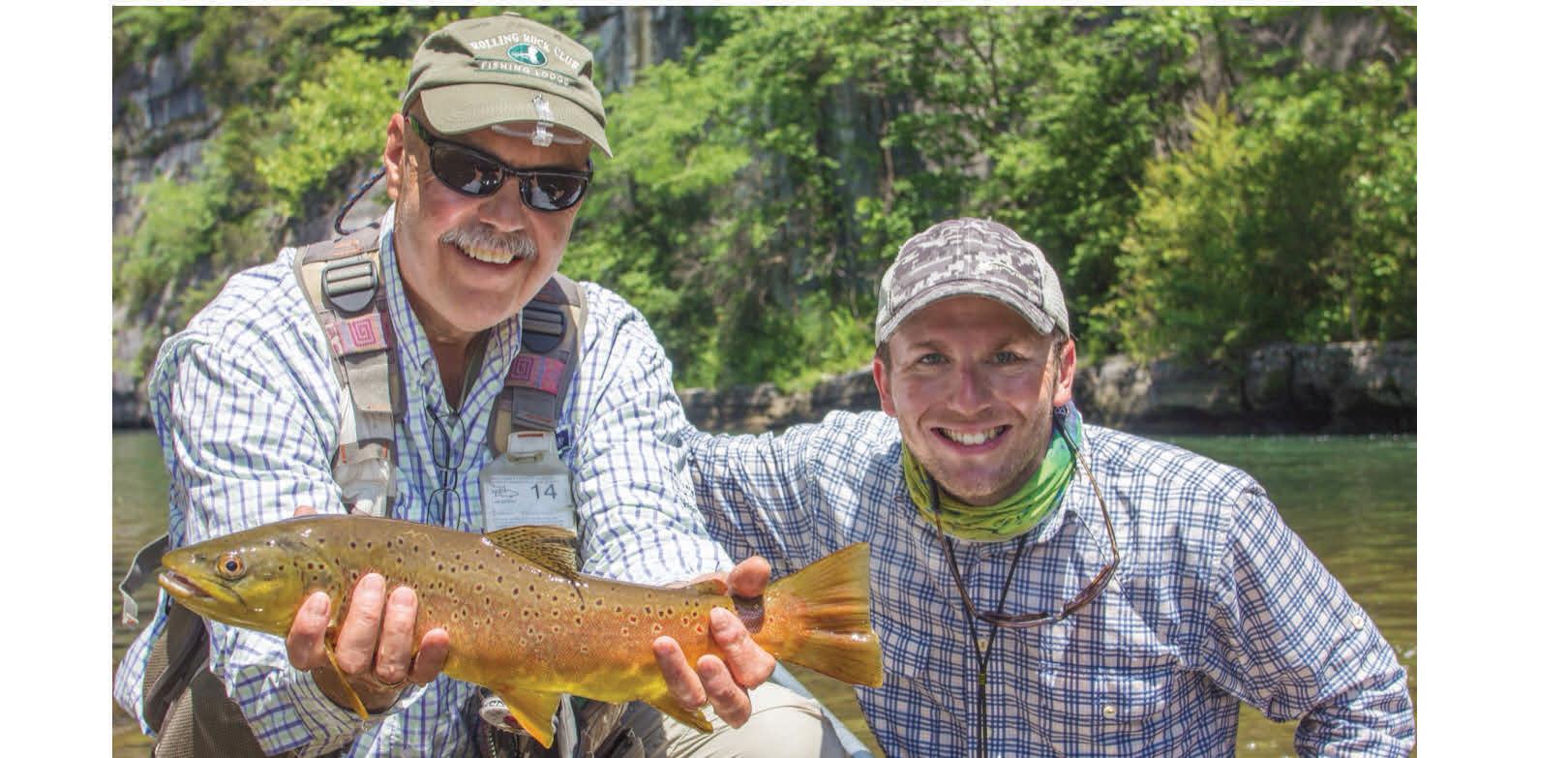




In mid-June, NOAA Fisheries announced a one-day recreational season for red snapper in the South Atlantic. Although there was widespread grumbling and gnashing of teeth by recreational anglers, it did not come as a surprise to pretty much anyone.
First the season: Red snapper harvest will be open for recreational anglers in the South Atlantic, from North Carolina through Florida, on July 12. Te limit is one fsh per angler.
Te date is subject to change in case a small craf weather advisory is projected. Any change in the date of the recreational season will be announced in the Federal Register, Fishery Bulletin, and an announcement via NOAA Weather Radio.
Now the reasoning: In 2008, NOAA’s stock assessment indicated red snapper in the South Atlantic were in bad shape and devastatingly overfshed. Over the last 16 years, NOAA has essentially shut down recreational fshing for the species, and catch limits for commercial fshing have been kept very low. Not surprisingly, it worked! Populations rebounded to the point where data indicates red snapper are now more plentiful in the South Atlantic than at any time since such data existed. What’s more, the fshery continues to improve ahead of the projected recovery timeline.
Tis year, instead of allowing greater access to the fshery, NOAA decided to tighten already draconian restrictions. Te overall quota for red snapper was cut by 25 percent for 2024. As the fshery has improved, recreational anglers have gone from a ridiculously short fve-day season in 2019 to an absurd one day of fshing in 2024.

According to NOAA Fisheries, the red snapper fshery is in a “recovery trap.” Abundant red snapper have led to increased incidental catches by anglers, and NOAA extrapolates that data into a formula for catch-and-release mortality. Basically, they’re telling us that there are so many red snapper that anglers are killing too many of them by catching and releasing them.
Te result is tighter regulations in an infexible system, where highly questionable data is used to shut down access to a public resource. We’re not even going into numerous occasions in recent years when NOAA has been forced to admit its data is shockingly fawed.
According to the American Sportfshing Association, work is underway to improve data collection for the South Atlantic red snapper fshery.
In the meantime, try not to get in a boat wreck during the one-day mad dash to catch your one red snapper from the Atlantic. Or you can just trailer your boat to the Gulf of Mexico, where the states fnally managed to bludgeon some sense into federal fsheries managers a few years ago.
For more information, go to coastalanglermag.com.











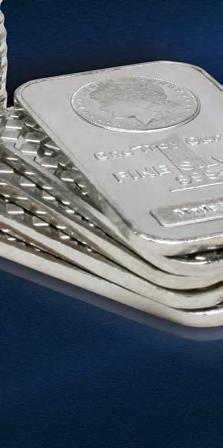


Not only are these hefty bars one full Troy ounce of real, .999 precious silver, they’re also beautiful, featuring the crisp image of a Morgan Silver Dollar struck onto the surface. That collectible image adds interest and makes these Silver Bars even more desirable. Minted in the U.S.A. from shimmering American silver, these one-ounce 99.9% fine silver bars are a great alternative to one-ounce silver coins or rounds. Plus, they offer great savings compared to other bullion options like one-ounce sovereign silver coins. Take advantage of our special offer for new customers only and save $10.00 off our regular prices.
What makes them iconic? The Morgan Silver Dollar is the legendary coin that built the Wild West. It exemplifies the American spirit like few other coins, and was created using silver mined from the famous Comstock Lode in Nevada. In fact, when travelers approached the mountains around the boomtown of Virginia City, Nevada in the 1850s, they were startled to see the hills shining in the sunlight like a mirror. A mirage caused by weary eyes?





No, rather the effect came from tiny flecks of silver glinting in the sun.






While no one can predict the future value of silver in an uncertain economy, many Americans are rushing to get their hands on as much silver as possible, putting it away for themselves and their loved ones. You’ll enjoy owning these Silver Bars. They’re tangible. They feel good when you hold them, You’ll relish the design and thinking about all it represents.
These Morgan Design One-Ounce Bars make appreciated gifts for birthdays, anniversaries and graduations, creating a legacy sure to be cherished for a lifetime.
Order More and SAVE
You can save $10.00 off our regular price when you buy now. There is a limit of 25 Bars per customer, which means with this special offer, you can save up to $250.
Hurry. Secure Yours Now! Call right now to secure your .999 fine silver Morgan Design One-Ounce Silver Bars. You’ll be glad you did.
One-Ounce Silver Morgan Design Bar
$49.95 ea.
Special ofer - $39.95 ea. +s/h
SAVE $10 - $250
Limit of 25 bars per customer
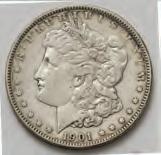
SHIPPING over $99!
time only. Product total over $99
Welcome to the best day of the week—the day before your next fshing trip! If you’re going ofshore tomorrow, it’s time to make a game plan, and a look at current Sea Surface Temperature (SST) charts is the frst step. With knowledge of accurate surface temps, chlorophyll imagery and other environmental factors, you can home in on areas that are likely to hold baitfsh and feeding predators.
By Mark Ambertto consider when targeting gamefsh. It provides shelter and feeding opportunities for all marine life. While you can stumble upon fsh just about anywhere in the ocean, you’ll locate more on and around structure.
Large underwater structure defects current and pushes nutrient-rich water toward the surface, creating areas where bait concentrates and holds. Also remember that weed lines are a key form of structure on the edges of the Gulf Stream.

A reasonably priced satellite service is a small price to pay when compared to rising fuel prices and time spent running in search of gamefsh. Here are a few of the factors SST charts can help you decipher and improve the odds of fnding fsh.
Color Breaks: Te boundary areas between blue and green water, ofen referred to as color breaks, will typically stack up bait and hold above-average numbers of gamefsh.
Chlorophyll is the beginning of the food chain for marine life. Find it and you have a good chance at locating bait and fsh. Temperature and chlorophyll breaks ofen correspond with color changes. So, once you’ve reviewed the images and located the general area of a color break, this becomes an area of interest.
Structure & Current: Structure is critical
If you can fnd a color change that corresponds with structure, this is where you want to begin fshing. If everything lines up, there’s a good chance upon arrival that you’ll see marine life including birds, porpoise, fying fsh and other bait. Tis doesn’t mean you won’t catch fsh in of-colored water, but there’s a much better chance you’ll fnd concentrations of bait in or around the edges of areas where green and blue water interact.
Tides from inlets also play a role in water clarity, creating rips and weed-line formation. Bait will concentrate along the edge, especially where this water pushes up against the waters of the Gulf Stream. Look for these demarcation lines on incoming and outgoing tides.
Learn to read these vital signs both on and of the water using charts. If you can consistently

fnd areas that hold bait, you’ll always have a shot at your quarry. You will have become a top predator!
Mark Ambert, IG @marksgonefshing_™

















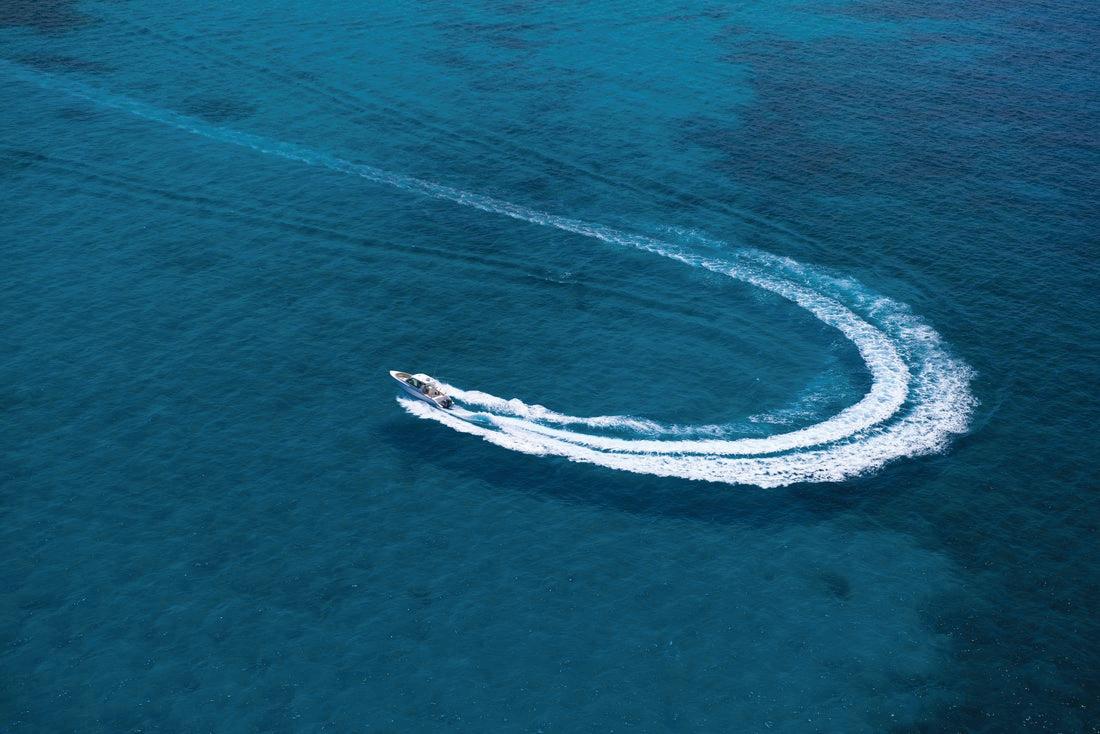
 By Mark Ambert
By Mark Ambert


The electric reel is a game changer for highspeed jigging. Electric provides some distinct advantages in comparison to hours spent manually cranking jigs at high speed through the water column.
With this style of jigging, I’m talking about working heavy jigs for big fsh on deep structure. Te key to catching fsh is fnding areas that consistently hold bait. Look for reefs, hills, and larger wrecks in deep water that hold baitfsh. Tis is where you’ll fnd feeding fsh.
Check your sonar screen frequently and look for “scratches” or fsh feeding in the water column. We usually assign one person to call out depth changes along with depth of marked fsh. Tuna can be found from 250 feet up to the surface. Highspeed cruisers like wahoo and kingfsh prefer the upper 50 feet of water, while amberjack will be close to structure. Jigging and adjusting depth to target fsh is more efcient under electric power, and the most difcult part of the electric game is picking the right equipment that works together.

Simplicity, along with reasonable size and weight, are key considerations for long days targeting big game fsh. I landed on the Piscifun Kraken X electric reel, and it has become indispensable in my arsenal.
Te Kraken is moderately priced and uses the same proven Japanese motor technology as many of its competitors. Te 33 pounds of max-drag were put to the test unexpectedly in the reel’s frst trip during a battle with the ultimate slugger—a 40-pound-class amberjack. Tey’re not called “reef donkeys” for nothing! Tis reel made short work of that AJ without heating up or momentarily shutting down, which is a common issue for overtaxed electric reels. I fsh a lef-handed model when high-speed jigging, and the Piscifun PB5000 battery pack provides all-day power and complete

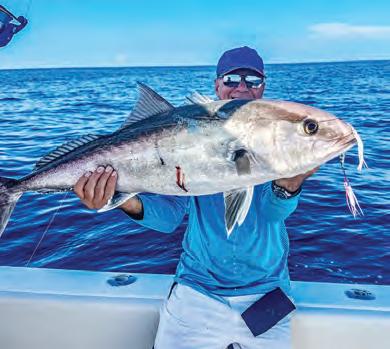
mobility around the boat.
Te Kraken mates perfectly with the Goofsh Monster Deep PE4-7. It’s a 7-foot rod that handles a maximum jig weight of 700g. It can deadlif 44 pounds, and has held up to some signifcant adversaries without being too heavy.
I spool all my reels with FINS braid. I use the 45/6, which has 45-lb. breaking strength and the diameter of 6-lb. monoflament. Tis matches the reel specifcations while adding line capacity. Te thin diameter also cuts through the water with little resistance, which is critical for vertical jigging.
On the business end, I use jigs in the 180-to320g range but can go as heavy as 700g if needed to reach bottom. I use a 50-lb. wind-on leader from Sufx. My go-to jigs are from Williamson, under the Rapala family of lures. Rapala also owns VMC,
so these lures are equipped with high-quality hardware. I use Koika, Kensaki, Vortex, Abyss and Benthos jigs.
With these in your arsenal, you can cover any situation and depth. Make sure to purchase glowin-the-dark options along with high visibility and natural colors. Purchase your favorites in multiple size ranges from light to heavy, and you’re set!

With an electric reel, you can easily alternate jigging retrieves from a slow yo-yo motion, which mimics a wounded baitfsh, to a full-on high-speed assault, which triggers the bite refex. Experiment with diferent techniques and settle on the one that works best on any given day.
Make sure the drag is set like any other star drag reel with the ability to pay out line when a big fsh slams your ofering. Once hooked up, use the electric motor to apply constant pressure. I fnd this is more efective for wearing a fsh down than manually pumping the rod while reeling.
Most of all, experiment with your new rig. It will open a world of new options and make your days much more enjoyable. I alternate between the powered setup and a quality spinning rod setup specifcally for jigging.
I personally have over 400 hours of hardcore jigging on this combination without a single point of failure. Now get one on the water and enjoy your new-found passion!
Mark Ambert, IG @marksgonefshing_™




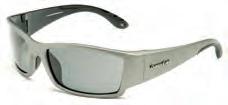




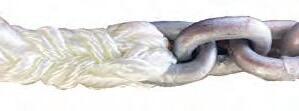

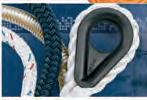




Just in case you missed the frst few runs of blackfn tuna that made it to south Florida, they’re still around, and this month I’d like to share some information and tips about targeting this amazing eating fsh.
Blackfn are very easy to distinguish from other tuna species. Like all tuna species, they are football shaped with smooth scales. Unlike yellowfn, blackfn do not have elongated dorsal or anal fns. Tey have a black stripe running along the top of their back. Most blackfn caught around here weigh between 5 and 10 pounds and measure in the 20- to 30-inch range.
Tese tuna are found from Massachusetts down into Brazil, including the Gulf of Mexico. Within these regions they will almost always be found in schools. Tese schools can be found in a variety of water depths which varies due to current and water conditions as well as the presence of baitfsh. However, they will typically not venture past 200 feet.

Since blackfns are highly migratory fsh and are constantly moving, they can’t exactly be targeted of reefs and other structures, like some other species. However, they do feed primarily on baitfsh and hunt prey like grunts, threadfns, blue runners or even pinfsh, and many times structure is what consolidates these baitfsh. Tuna schools can ofen be found wherever the bait schools are, and they tend to stick around for a while as they clear out all the baitfsh in an area. Tere are occasions when they will also eat squid or shrimp that foats past them.
Of Florida, blackfns spawn from April to September. When they spawn, the schools of blackfn move farther ofshore and participate in broadcast spawning. Te purpose of moving ofshore is to make sure that the eggs stay adrif in the Gulf Stream and don’t get pushed inshore. However, since the eggs and young tuna spend a majority of their life ofshore, this creates opportunities for predators such as mahi-mahi, skipjack tuna, sailfsh, birds, and of course sharks.
Tere are many ways to target blackfn tuna. I like to drif fsh for them with whatever bait is prevalent and available, whether it’s blue runners, sardines or threadfns. A typical spread for drifing might include two weighted downlines—one for the middle of the water column and one deeper— and a couple of freelines, one on each corner. Kites are another great way to present baits on the surface. With a spread like this, you’ll cover the water column from top to bottom and have a good chance of putting baits in a school of hungry blackfns. If you don’t love live bait, slow-pitch jigging around reefs is also an option. Either way, you never know what else you’ll catch while fshing for tuna.
Remember, fshing is called fshing and not catching for a reason. Try and try again until you succeed! Te IGFA all-tackle world record blackfn tuna weighed 49 lbs., 6-ozs. It was caught of Marathon, Florida back in 2006.
Emily Rose Hanzlik has caught more than 60 IGFA world records in various categories. Find her on
media @emilyhanzlikoutdoors.










Whether considering repowering your trailer boat or your offshore beast, there is a Mastry Suzuki RePower Center that can serve your repower dreams. Mastry Suzuki RePower centers are the best in the business and have the experience, technical know-how and boating passion to make your repower project a remarkable success. With total boat systems capabilities your local Mastry Suzuki RePower Center can address all your upgrade aspirations. Essentially transforming your boat into a totally new boat at one single location.




















ShoreStation hydraulic boat lifts are a reliable choice for coastal residents and boating enthusiasts alike. Their strong construction, made with corrosion-resistant materials, allows them to withstand harsh environmental conditions, including sun, storms, and saltwater damage. ShoreStation provides a steadfast solution for protecting waterfront investments, ofering peace of mind to owners in the Sunshine State.
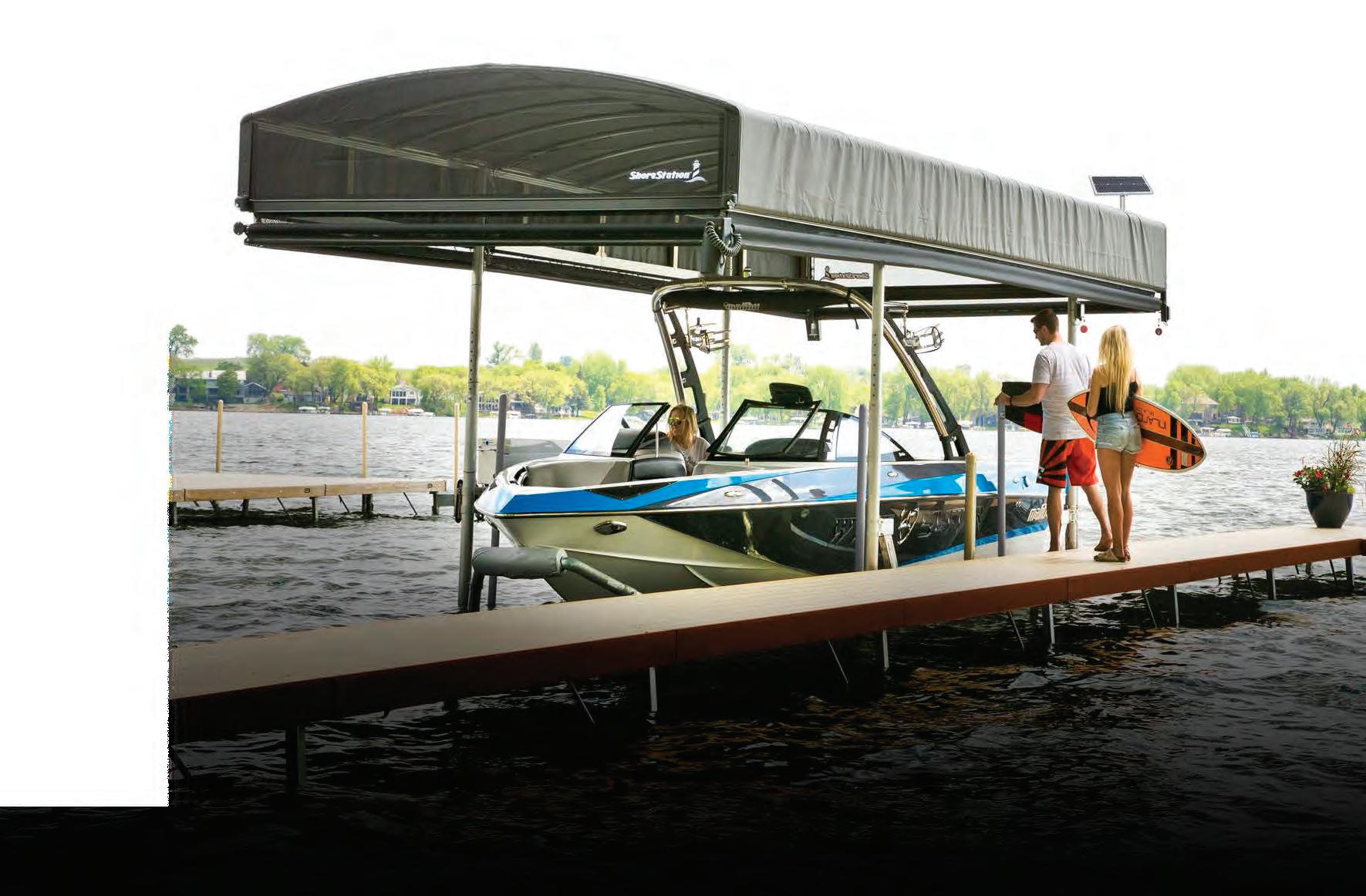
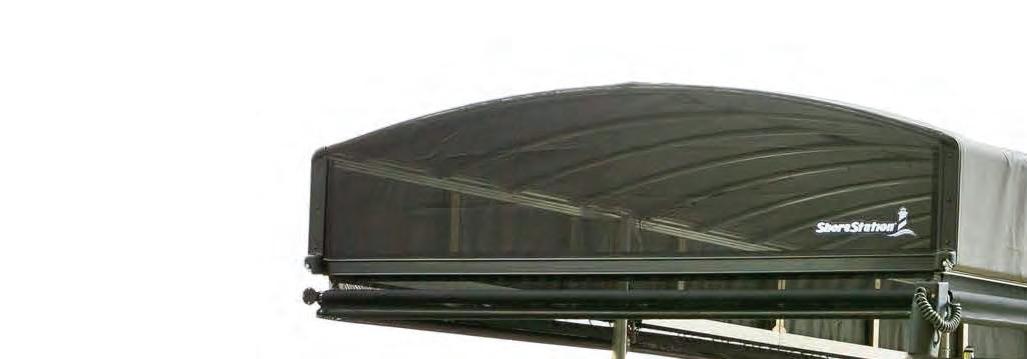

 No Profle Boat Lift
Four Piling Boat Lift
No Profle Boat Lift
Four Piling Boat Lift


Equipped with exceptional weather resistant fabric and breathable SunTex 80 woven mesh ends for maximum protection and durability,

Made from the highest quality materials, our innovative hydraulic boat lift is one of the fastest and safest lifts on the market today. When you have a hydraulic lift, there’s no need to worry about wind and waves getting in your way. This lift will give you confdence to safely land and secure your boat in less-than-ideal conditions.

Never miss another moment on the water. Power your lift with clean, free solar power. Our speedy 20 watt charger features solar regulator drainage protection, saving your battery from permanent damage caused by overcharging.



Every fsherman has a story of the “one that got away.” In my case, the “one that got away” story is of an ongoing battle that became personal.
One fall morning in central eastern Florida, I was fshing under a dock with a Zara Spook. During my retrieve, an explosion broke the water in a way I had never seen in 35 years of fshing. I stood in shock as line peeled of my 4000-size Penn Battle II combo. When the fsh jumped, I saw it was in the mid-40-inch range, and as is frequently the case with big snook, she played with me for a while before bolting into the pilings to break me of. Tis monster would have been my personal-best.
A few weeks passed before I returned to the same dock. Tis time I went armed with a paddletail. Maybe 15 casts in, she bit. I could tell right away it was the same fsh because of the way it fought and because it hit in the exact same location. Speaking of the same, she did the same thing and broke me of in the pilings.
Would you believe me if I told you it happened again? Well, you better, because it happened six more times! Afer the fourth break-of, as I was walking along the shore, I found the Spook I lost the frst time I hooked the fsh.
I told you it became personal. Over the next
four months, I woke up at 4:30 a.m. fve or six days a week to fsh the same spot.
By Brian DapeloI ended up having a total of seven hook-ups and break-ofs with that fsh before I went back to the drawing board.
I geared up to a Penn Battle II 5000 rigged with 30-pound braid and a 50-pound mono leader. I changed lures to a Zman MinnowZ pinned to a ¼-ounce DOA red long-shank jighead. My logic was the long shank would give space between the hook point and the leader, which kept getting frayed by the fsh’s teeth or sliced by the gill plate.
On the morning of Aug. 11, on the third cast of the day at the same spot, my lure just stopped. As I came tight, I saw the head of a snook. As it got closer, it kept getting bigger, and when I gave my rod a hard tug, the fsh didn’t even fght. It swam straight to the shoreline. I knew right away it was THE ONE! I worked quickly to measure and photograph


the fsh so I could release it safely. It was 44 inches, without the tail squeezed.
We all have stories of the ones that got away. How many can say they’ve had the same fsh get away seven times, only to land it eight months later in the same spot?
Got a great fshing story? Write it up and send it with a few photos to editorial@coastalanglermagazine.com. We might just share it with the world.

















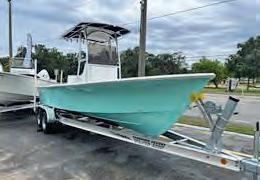















franchise owners
Jamie & Deidra Thrappas
Marco PoMPano Freak on the Beach 386-212-4838
caPt. JaMie thraPPas Ponce Inlet and Backwaters www.YellowDawgFishing.com
caPt. Michael savedow Edgewater Backcountry www.EdgewaterRiverGuide.com
caPt. evan sanders Sol Fishing with the Captain & Kids www.SolFishing.com
Blake aBBey Kayaking @kayakkingcharters
skye Burkhardt Inshore Adventures @BrassyAngler87
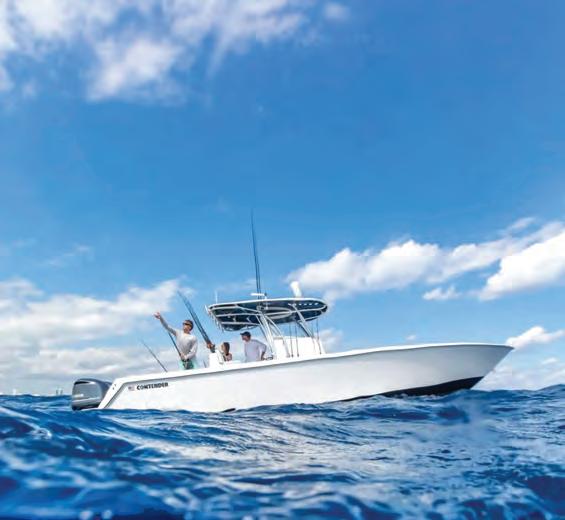
call Jamie at 386.366.3424 or email volusia@coastalanglerMagazine.com


As far as pristine beauty goes, we have it here in Wilbur By the Sea. The oceans calm down, the water is a clean, and a clear blue-green. Caribbean style. Ya, mon!
The big scout pompano are here, feasting on sand fleas and crab knuckles.
Here’s a little reminder what a sand flea is: One of my two favorite baits, sand fleas are crustaceans that live on the sandy beaches near the high tide mark, that form colonies. They’re also called Atlantic sand hoppers. They grow from a quarter-inch to an inch long and mostly come out at night to feed and forage, digging down during the day. That is why we use a sand flea rake to shovel them up when we can find them. They’re hard to keep alive, but keeping them cool and rinsed in seawater, you have a good chance for a few days of great bait.
It’s starting to get very hot in Florida. The water temperature is rising into the 70s, with some great fish sticking around. We’ve been getting out here early in the morning for sunrise fishing and cooler weather.
The ocean is flat today. The anticipation is high, the wait isn’t long. My oldest rod and reel is singing an old song right now. Given to me by my friend Brandon, it’s a 65 year-old Penn (Mr. Greenie) bail-less spinning reel on a custom-made 70-year-old rod.
It was his grandfather’s. He built it but they didn’t forget how to Bomba! It’s just what they’re doing right now. Bringing this old equipment back to life is what it’s all about. It looks so good bending over. No arthritis there!
Mr. Greenie, the old Penn, is letting out line, making a certain old sound that I really like to hear. That’s when I know I’m in the game!
After playing with it and reeling in for a few minutes, I am rewarded with a really nice quality pompano.
The season is starting to slow up a little bit. Lots of lady fish in the water. For the first time, I see the schoolie mullet coming by in decent numbers, which means redfish are lurking. Ya, mon!
One of my greatest pleasures is to pull in some pompano when my neighborhood friend’s young kids are on the beach. Here is a picture of Scout who’s been fishing with me just about since she was born. She’s four years old now and lives next-door to us. She’s a pro!
Things really turned on late in the pompano season. A lull in the activities on the beach then became hot and heavy. The whole tribe of pompano came back in very warm water and it was on!
Needless to say, me and those fish are heading to the smoker.
Wilbur

Hire these professionals



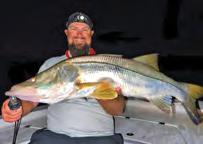



reel harMony
fishing charters
Capt Marty Goldys
Call for a 5 star Fishing Experience
Inshore • Snook • Redfish
Tarpon • Flounder
386-679-0317
www.reelharmonyfishing.com reelharmonyfishingcharters@gmail.com
new legacy fishing charters
Capt Marshal Wallot
Nearshore and Inshore Fishing
Trophy Redfish & Black Drum
Tarpon • Snook & More
386-214-9595 www.newlegacyfishing.com marshalwallot007@gmail.com
yellow dawg fishing charters
Capt JaMie thrappas
Offshore • Inshore • Back Country If it swims we catch it! 386-366-3424 www.yellowdawgfishing.com
coastline charters
Capt kevin Gill
Ponce Inlet
Snook • Redfish
Flounder • Triple Tail
386-222-2805 www.fishponce.com Instagram @fishponce Facebook @Coastline Charters




Pole dancer fishin’ charters
Capt Jeff patterson
Inshore & Nearshore Fishing
Daytona Beach
Redfish • Snook • Triple Tail • Trout
386-451-4992
www.smallboatbigfish.com captainpatterson@yahoo.com
caught uP fishing charters
Capt Bruno iMBrunone
Inshore and Offshore Fishing New Smyrna Beach
Snook • Redfish • Tarpon • Cobia Snapper • Flounder
386-689-7409
www.caughtupfishingcharters.com caughtupfishingcharters@yahoo.com


driftwood charters
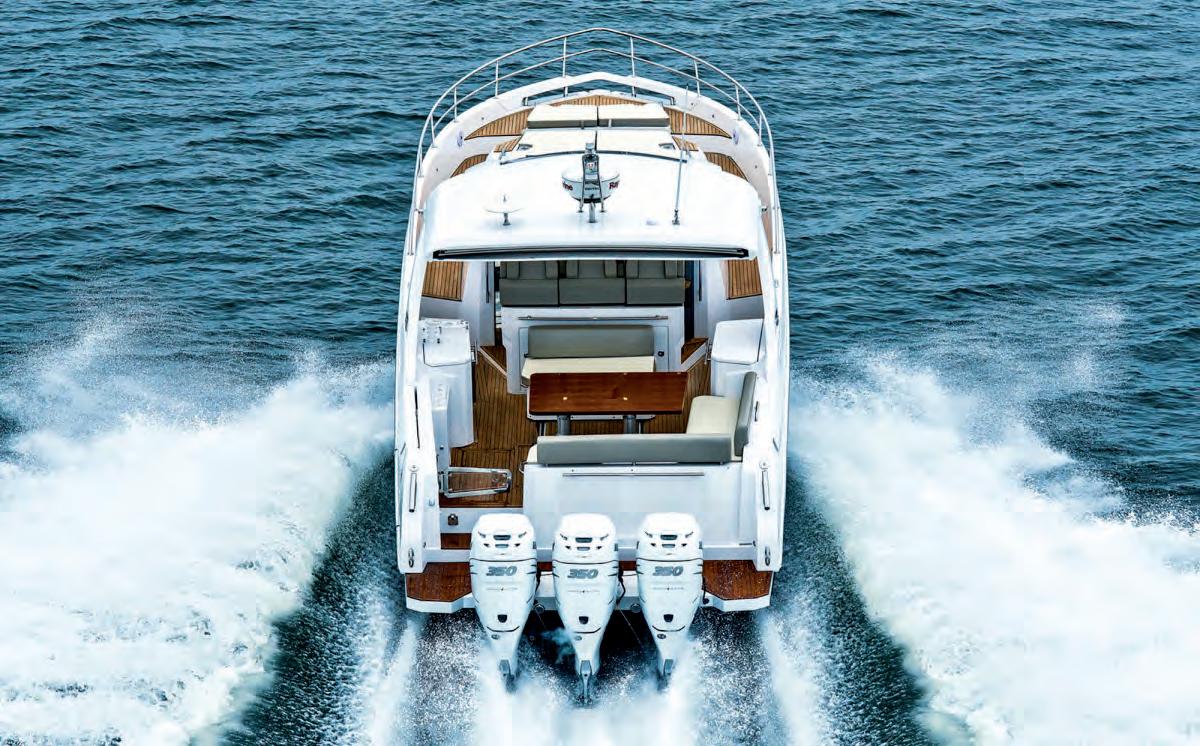
Capt Jarrod tuttle
Inshore/Nearshore/Offshore
Seasonal Wahoo, Swordfish, Tuna, Deepdrop trips
386-295-7908
Capttutt@gmail.com www.Gofishponce.com


aptain Jarrod Tuttle was born and raised in Port Orange, FL, and has been navigating our waters for over 20yrs. He is not only an expert on the local waterways, but also on the vast fish species and wildlife that our area holds.
Thanks to his grandpa he developed a love for fishing at the age of 4 and received his 6-Pack Captain’s License at the age of 20. He then upgraded to a 100-Ton Master Captain’s License at the young age of 23 and spent many years working on 200’ Supply Vessels in both The Gulf and in South America. Servicing and supplying oil and gas platforms for almost 10 years.
After a long career on work boats and moving back home he started Driftwood Charters. Today, he dedicates all of his time to fishing most of the east coast of Florida. His two young daughters Harbor & Saylor are learning the ways of fishing and love to be his crew on trips with his family.
With a wealth of historical knowledge and of the surrounding area, you can rest assured that your experience with Captain Tuttle will not only be an Old Florida adventure, but also a learning experience that will give you a taste of our humble little community on the Florida Coast. No matter what age you are.
Offering Inshore/Nearshore, and Offshore trips year around. With Swordfish, Wahoo, and Deep Drop seasonal charters. So, if you’re looking for a trophy of a lifetime or just a nice day on the water, there’s pretty much no limit to what he can provide.
Most trips are ran out of a 25 Chawk with a 300hp Suzuki. Larger boats are available for larger parties and specialty trips!
To book a trip you can either call 386-295-7908 or go to the website gofishponce.com which lists all rates and types of trips available.
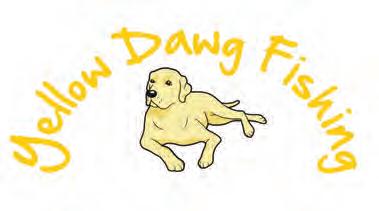
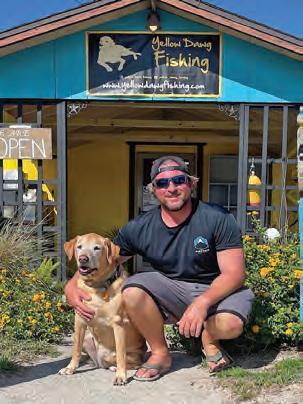


Captain & The Kids strives to always promote youth anglers both at the local level as well as nationally through our “Youth Angler Program.” If it was not for passing down techniques, traditions, and the love for the water, it would slowly fade away. It is our mission to always instill conservation and ethical fishing to our youth!
Capt. Evan started the Youth Angler Program after finding out how many kids in the New Smyrna Beach area had never been fishing, never been on a boat, and was born and raised in the area. Since that day Capt. Evan strives to getting more and more youth anglers on the water each and every year! Sol Fishing will do everything possible to make every young man or ladies fishing dreams come true. It does not matter if the kids want to go offshore or inshore, Sol Fishing will target whichever species they want to catch. Some of the most recent species that the youth anglers have been wanting to target are red snapper, lane snapper, cobia, amberjack, sharks, barracuda, redfish, and snook.
Captain & The Kids program is made possible by all of our retailers who stock Sol Fishing gear such as our hats, decals, shirts, and other apparel. Stop by New Smyrna Beach Outfitters, Outriggers, Donald’s Bait & Tackle, 38 Live Bait, E & J Bait & Tackle, Sunglass Cabana, Shades of New Smyrna Beach, Boaters Exchange, and Pedego of NSB to get your Sol Fishing gear to help support Captain & The Kids! Sol Fishing’s amazing sponsors Penn, Fenwick, Plano, Fin Nor, Daiichi Hooks, Powerpole, Seadek Marine, Brighter Days Marine, and Castaway Customs also play a huge roll in the program!









The heat of July dictates when, how, and where you want to fish in Edgewater Backcountry and Mosquito Lagoon. Most people will fish early morning, late afternoon, or at night. Start your morning fishing trips as early as possible to take advantage of the sunrise feeding pattern. Cloudy water is the usual for the summer months, use baits a fish can find. Smell, sound, and vibrations in the water are key. Smell can be achieved with bait such as shrimp, cut bait, or scented soft plastics like Gulp. Sound made by top water lures with rattles or poppers, and baitfish like croakers and pigfish, vibrations from live finger mullet, mud minnows, and lures like spoons. One of the best live baits right now are the tiny “mini mullet” which are widespread in the backcountry, lagoon, and ICW during early summer. They hatched here locally in early spring and are now just big enough to stay put in a cast net, usually hugging close to sandbars and shorelines. Fish them free lined and tail hooked in shallow water or lip hooked with a small weight on the bottom of deeper holes and channels during the summer heat. The small mullet are also great summer flats bait, freeline near shallow flats edges, oyster, and shell bars. Another option to fight the heat is to fish shade, some fish do take advantage of man-made structures during middle day sun shine. Such as under bridges, docks, and boats,
The night has been good around the inlet and I love focusing on flounder this time of the year! They will be stacked up along the jetties, docks, and even on the sun glow and Flagler Ave artificial reefs. Mud minnows are the go to bait in my opinion but shrimp will also work well. I like short 15# Flouro carbon leaders with a 1/0 circle hook. I also catch a ton of mangrove snapper in that 15” range this time of the year. Great eating to go along with your flounder filets! I like smaller live shrimp on a #1 circle hooks for these hard hitting little fish. I focus on deeper docks for the bigger ones both to the north and south of the inlet. Lastly the tarpon are here and thick! I like free lining both mullet and pin fish for them where I’m seeing them feed and roll. I also like throwing big 8” swim baits to feeding fish it’s one heck of a hook up when they eat one. Both Hogy and NLBN have worked well for me lately. As always get out there and fish; and if you see us on the water say hello!

capT. JaMiE ThrappaS Yellow Dawg Fishing www.yellowdawgfishing.com (386) 366-3424


plenty to pick from, there are uncountable docks and moored boats in coastal Volusia County. Main rule on these is to pick older structures, moorings, and/or old dock pilings because they are covered with barnacles and plant growth in turn attracting bait fish. Seldom used docks are also a plus to hold better game fish and docks with larger boats in residence usually have a deep hole to accommodate the boat. Fish sinking lures, shrimp, and live bait fish close to and under the docks. You will have to deal with snags around the structures, but that comes with the territory. Long time moored or docked boats are great FAD’s
(Fish Attracting Device), structured oriented fish which include, including Mangrove Snapper, Redfish, Snook, and Trout will be caught in close and under the FAD. Open water game fish like Jacks and Ladyfish can be close by being attracted to the shady spot and baitfish. Many docks also have a bonus of nearby old standing pilings, oyster bars, grass beds, and channel drop offs. One of the best choices for summer night fishing are dock lights and bridges. Schools of bait fish and sometime shrimp are attracted to the light and structure which in turn bring in the trout, snook, redfish, jacks, ladyfish, and snapper to name a few. Match the hatch of which type of bait you are seeing, use a small size lure, swim bait, jig, twitch bait, or soft plastic shrimp for most species. For the most strikes, a free lined live shrimp can be the best go to bait. Anchor just up tide and cast out from the light, throw your bait up current from the circle of light on the water and allow it to “swim” naturally through the target area. Outgoing tide can be best, but a moving tide in either direction is a must for a good bite.
capT. MichaEl SaVEDow Edgewater River Guide EdgewaterRiverGuide.com (386) 689-3781








Hey, a not so successful day on the water is much better than a 9-5 indoors. The old saying is certainly true, however high temps are sending a lot of us running back inside to enjoy the air conditioning and sip an iced tea.

However, sitting in the AC is not an option for this lady angler. With the summer heat, it can be a little more challenging to hook up or get a bite in the dead of day! But there are still plenty of good inshore action to be had.
When to fish
Fishing the tides is key to help with a successful fishing trip, especially this time of the year. I prefer a high tide which push redfish up under mangroves, where they are seeking shade and protection from the Florida heat. As it may be slightly more challenging to lure these fish from hiding and that’s when pitching the right bait comes in play.
Where to find the fish
Where to find fish


This time of the year you’ll find the bite to be better at the crack of dawn or right before the sun goes down. I specialize sightseeing Redfish in the grass flats of mosquito lagoon, the marshes on Indian River, all the way to the Tomoka Basin, and nooks all in between on the east coast. The great thing about Reds are you can find them year around in our estuary.
I am an angler and I use artificial baits. My go to and favorite bait for the marshes and flats where I target said species would be a 3” paddle tail NLBN. Depending on the water clarity and location would dictate the color bait I would be using. Darker water for darker baits, and clearer waters light color baits.
DOA, Vudu shrimp, Mir’o lure, superspooks are all personal favorites. If all else fails there is nothing wrong with trying live baits. A jumbo shrimp in cooler and deeper waters. Or even a pin fish or finger sized mullet for Snook, Trout, or Tarpon. You can toss these in whole or snip the tail to release scent.

You can find fish scattered in this heat. Redfish in mangroves, tarpon under bridges, snook up against pilings. Find fish feeding at points in the flats where they can ambush bait. Tarpon rolling down creeks and canals; snook under structure in the back country. Fishing the first hour incoming and outgoing tides as well as our coolest points of the day being sunrise and set. These will be your best times to fish and more chances of a fulfilling trip. Now many of you be excited to get in the water and we’re certain you have everything you need.
The summer time heat can make your fishing trip challenging to bring fish to the boat .. or yak I should say. I do recommend bringing live and artificial baits. Because one day you might pluck all your catches on artificial baits and the next day nothing will chew. It’s always best to just be prepared and have choices to help give yourself a successful fishing trip.

1
2
3
4
5
6
7
8
9
16
18
19
20
21
22
23 Tue 10:36 2.7 11:03 3.6 4:28 -0.2 4:23 -0.4 6:38 8:21
24 Wed 11:28 2.9 11:51 3.4 5:15 -0.3 5:20 -0.3 6:39 8:21
25 Thu 12:22 3.0 6:05 -0.3 6:24 -0.2 6:39 8:20
26 Fri 12:41 3.2 1:19 3.2 6:57 -0.4 7:31 0.0 6:40 8:20
27 Sat 1:34 2.9 2:18 3.2 7:48 -0.4 8:35 0.1 6:40 8:19
28 Sun 2:31 2.7 3:20 3.3 8:40 -0.3 9:39 0.2 6:41 8:19
29 Mon 3:34 2.5 4:24 3.4 9:33 -0.3 10:44 0.2 6:41 8:18
30 Tue 4:39 2.4 5:25 3.4 10:29 -0.2 11:46 0.3 6:42 8:17
31 Wed 5:39 2.4 6:20 3.4 11:26 -0.2 6:43 8:17


Ormond Beach, Halifax River, FL - Jul 2024











It’s summer time and that means the early bird gets the worm. Redfish and snook will aggressively feed early morning and again at dusk so avoid the heat in the middle of the day and fish when it’s not so hot out! A decent amount of flounder are being caught in the area on the beach and in the river. I’ve even seen some triple tail being caught in the river! On the beach, surf fishing is in full swing with pompano, whiting, and sharks being caught. It’s that time of the year so come up and see us and get out there!

capT. JaMiE ThrappaS Yellow Dawg Bait & Tackle 35 High Bridge Road • Ormond by the sea Instagram: @yellow_dawg_bait_and_tackle Facebook: Yellow Dawg Bait & Tackle 386-278-6208









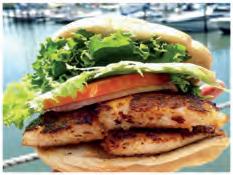










The 2024 Atlantic hurricane season could be one of the most active on record.
It’s important that boaters have a plan in place for their vessel long before a storm is even named. Here’s a list of boating tips to consider before, during, and after a hurricane. General PreParedness
Prior to a storm:
• Know what your marine insurance policy covers. Some insurance companies may require owners to pull their vessel out of the water during a storm or store it in a specific location while the storm is a threat.
• Understand your policy coverage as it relates to the recovery of your vessel, transportation or storage, repairs or, in the worst-case scenario, the demolition, and disposal of your vessel.

• If your boat is kept at a marina, check your marina policy to understand requirements and procedures.
Before a storm
• When a storm is approaching, determine where your boat will ride out the storm.
• If your boat needs to be relocated on land, position it on a trailer close to a strong building to break the wind and away from debris and strap it down securely. To anchor the trailer, place blocks beneath it and deflate the tires so it doesn’t shift around due to high winds.
• If the boat must stay in the water, secure it to the dock with longer, thicker lines to ensure it doesn’t sway during the storm.
• Ensure there aren’t any loose items on the boat that could potentially fly around during the storm and cause more damage.
• Take video inventory of all property onboard and place legal documents such as policies, licenses, and registration in a secure, dry place away from the vessel.
durinG a storm
• Monitor radio, TV, NOAA Weather Radio, and/or hurricane hotline telephone numbers for official storm updates.
• Do not return to the vessel until there is an official announcement that the storm has passed, or the marina is open.
after a storm
• Once it is safe to return to the vessel, inspect it for any structural damage.
• If the boat was damaged, take photos, and report it to your insurance company as soon as possible.
• Be sure to only work with licensed and insured companies, like Sea Tow, to recover your vessel. Rest assured knowing that Sea Tow’s experienced captains are available to assist with the recovery process and prevent any further damage.

Port o range, FL 209 Dunlawton Ave. #7 386-846-2657
Daytona Beach, FL
260 Daytona Blvd. D-440, 386-871-9319


n ew Smyrna Beach, FL 394 N Causeway, 386-295-3203
FL ag L er Beach 701 N Ocean Shore Blvd. 386-481-0593 o rmon D B each
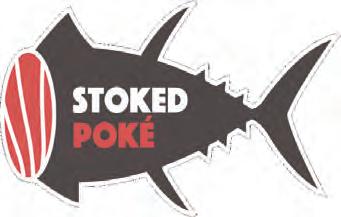

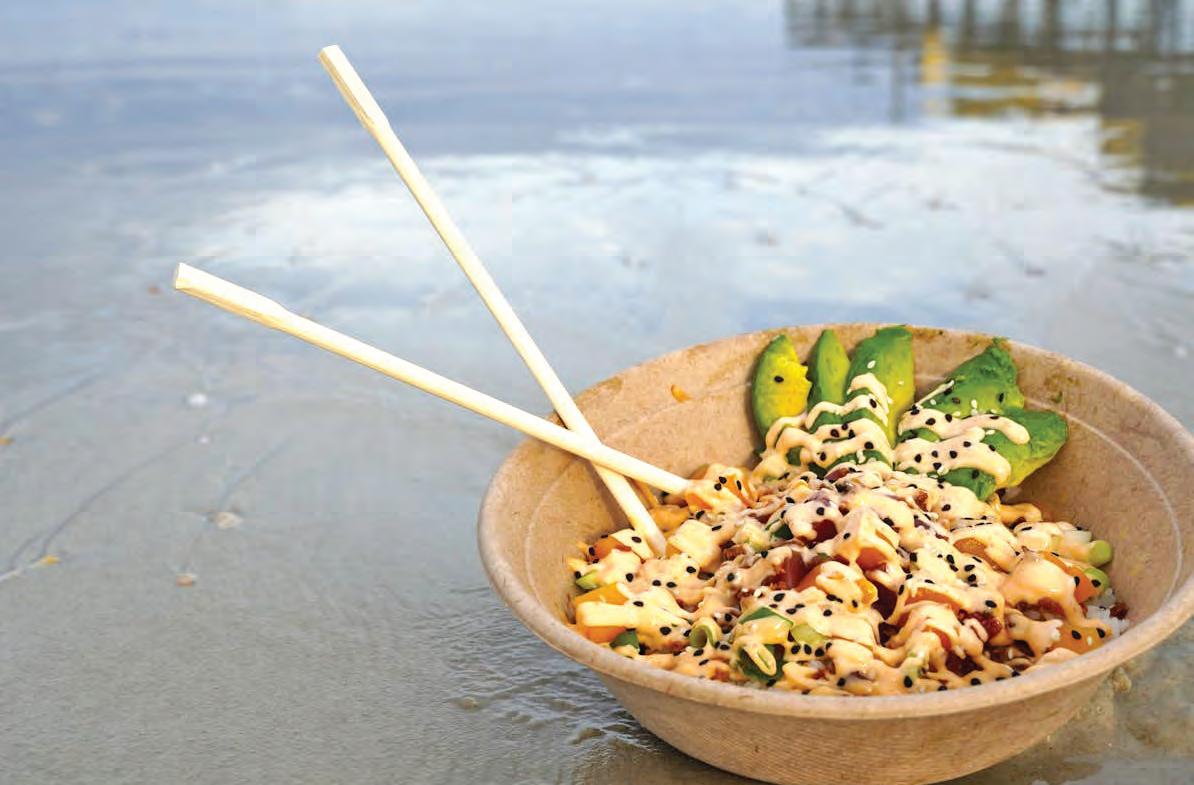

Locally Owned With A Chef Inspired Menu
Locally Owned With A Chef Inspired Menu
Locally Owned With A Chef Inspired Menu
Locally Owned With A Chef Inspired Menu
Millie’s offers fresh LOCAL seafood, meat and produce.
Millie’s offers fresh LOCAL seafood, meat and produce.
Millie’s
Millie’s
Millie’s offers fresh LOCAL seafood, meat and produce.
Millie’s
3218 S. Atlantic Avenue



3218 S. Atlantic Ave, Daytona Beach Shores 386-275-1492
3218 S. Atlantic Avenue
Millie’s south
Daytona Beach Shores, FL 32118 386-275-1492
3218 S. Atlantic Avenue
Millie’s North
Millie’s south 3218 S. Atlantic Ave, Daytona Beach Shores 386-275-1492

3218 S. Atlantic Ave, Daytona Beach Shores 386-275-1492
Daytona Beach Shores, FL 32118 386-275-1492
Daytona Beach Shores, FL 32118 386-275-1492
Hours:
3218 S. Atlantic Avenue
Monday 11am-9pm • Tuesday closed
330 S. Atlantic Ave, Ormond Beach 386-238-9756 Millie’s south
Hours:
Hours:
Daytona Beach Shores, FL 32118 386-275-1492
Millie’s North 330 S. Atlantic Ave, Ormond Beach 386-238-9756
Monday 11am-9pm • Tuesday closed
Wednesday - Saturday 11am-9pm Sunday 9am-9pm
Hours:
Monday: 11am - 9pm tuesday: Closed
Hours:
Wednesday - Saturday 11am-9pm Sunday 9am-9pm
Monday 11am-9pm • Tuesday closed Wednesday - Saturday 11am-9pm Sunday 9am-9pm
Hours:
Wednesday - sat: 11am - 9pm sunday: 8am - 9pm
Monday: 11am - 9pm tuesday: Closed Wednesday - sat: 11am - 9pm sunday: 8am - 9pm
Monday 11am-9pm • Tuesday closed Wednesday - Saturday 11am-9pm Sunday 9am-9pm
Monday: 11am - 9pm tuesday: Closed
Wednesday - sat: 11am - 9pm sunday: 8am - 9pm





•
•
•
•
•
•
•
•
•





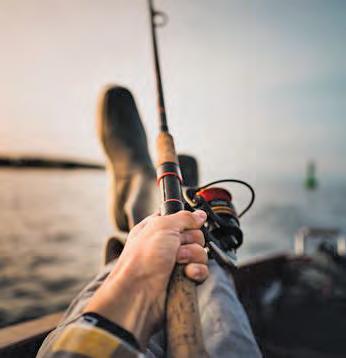













Irecently did an hour long podcast with Jay Valentine on kayak tournament fishing. I really dig his platform and wanted to spread the word in my monthly article. Being new to something isn’t easy. While half of all American adults indicate they enjoy some form of outdoor recreation, 1 in 5 say they are new to an outdoor sport, activity, or hobby, according to research by Penn State University. This surge in outdoor enthusiasm can largely be attributed to the Covid-era lockdowns. But while Covid has, for the most part, exited the scene, the joy for the outdoors has not. When you’re new to a hobby, growing and developing within it can be a daunting task. You have to learn enough to get started, sift through enormous amounts of information (and misinformation), find local areas to enjoy and practice the hobby, and perhaps most importantly, find a like-minded community of individuals to learn from and spend time with. Kayak fishing is no different. From the ground level, the amount of research that goes into finding the right fishing kayak for your style of fishing, your body type, your waters, and with the features you want, can leave you with more questions than answers. Add to that the research for accessories, PFDs, kayak carts, fish finders, lights, and fishing gear, and you’ve got someone ready to quit before they even get started. With a quick glance on YouTube, you might think you need a $10k setup just to get going in this hobby. Out of this struggle, Kayak Fishing Dads was created. An online community of weekend warriors and busy dads, this Facebook Group is geared towards helping the novice to grow, learn, and connect alongside seasoned kayak anglers. Since its inception in July 2022, it has grown to more than 25,000 members from all walks of life. Members take advantage of asking questions to the group, posting photos or videos, and diving into the “nitty gritty” in a welcoming place. You’ll find men sharing their PBs (personal bests), recounting their “skunk” days, and, of course, posting photos of fishing with their children. The group was started by Jay Valentine, better known as Bearded Dad Fishing, thanks to his YouTube channel. His videos focus on helping beginner and novice kayak anglers navigate the waters of kayak fishing, pun intended. Covering topics like ‘The best gear to get started,’
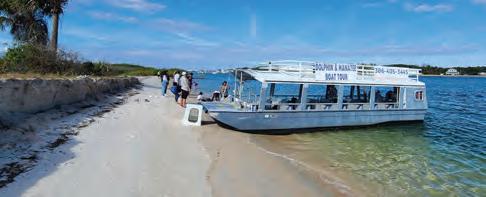
‘Kayak safety gear you need,’ and ‘The best kayaks for big guys,’ Jay aims to provide the right amount of information to help folks get going at their own pace and for their own needs. Jay noticed a gap within the kayak fishing space for authentic community. While Facebook groups are nothing new, there were no groups aimed at the everyday, no-intentions-of-goingpro, busy dad. And let’s face it, most new kayak anglers fit that bill. As he continued to meet folks at his local lakes and through his YouTube channel, he quickly realized that most kayak anglers were hungry for community. These were the seeds for the Kayak Fishing Dads Facebook group. After two years of growth and establishing the community, Kayak Fishing Dads started to host regional meet-ups. The first was in May of 2024 on Lake Nockamixon in Pennsylvania. More than 15 anglers showed up for a day of fishing and fellowship, with some driving as far as 2.5 hours. In June, regional meetups were also held in southwest Indiana and Massachusetts, with another planned for the end of July in Minnesota. “Kayak Fishing Dads is very helpful to me in finding local kayak dads to fish with and to share stories with. The local meet ups are also great” - Ray Johnson “I have met a lot of cool guys and have asked for help on what bait colors to use on some of the lakes I’ve been fishing and I have also helped other guys with what to throw on their lakes and creating their own trailer builds” - Brian Reed Kayak Fishing Dads has become a haven for busy dads looking to combine their love for fishing and family time. The community has grown into a supportive space where beginners and seasoned anglers alike can share tips, stories, and camaraderie. As the group continues to expand and regional meet-ups gain popularity, Kayak Fishing Dads shows that starting a new hobby doesn’t have to be overwhelming. With the right support, it can be a rewarding and enjoyable experience. Whether you’re new to the sport or a seasoned pro, there’s a place for you in this growing community.

blakE abbEy
Kayak King Charters 916-476-1403
@kayakkingcharters






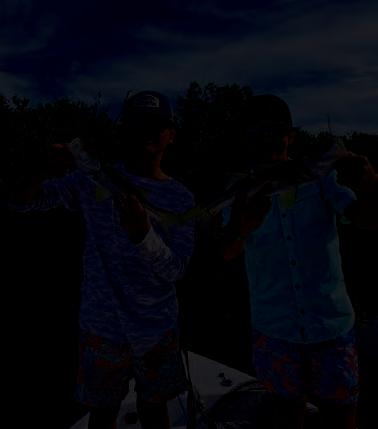






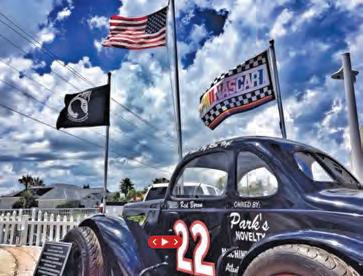
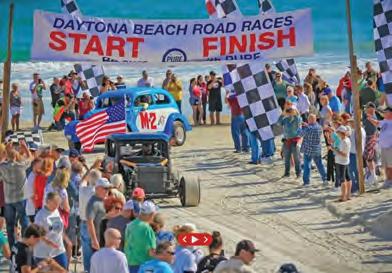

















On Solid Ground RV and Boat Storage is proud to bring premium boat storage to the Space Coast!
We are conveniently located just minutes from the coast and Port Canaveral, perfect for storing your weekend water toys so when you’re ready, you’re right by the action.
Our state-of-the-art security system includes 24/7 surveillance cameras, electronic gated access, and on-site management to ensure your RV or boat is safe and secure at all times. Our top-tier amenities include on-site dump stations, water and electric hookups, and a wash bay for easy maintenance.
With over 270 spaces available, we have options to fit all sizes of RVs and boats. Whether you’re looking for a simple uncovered spot, a canopy covered space, or a fully enclosed unit, we have the perfect storage solution for you. Don’t wait, call us today to reserve your space and take the hassle out of storing your weekend water toys!








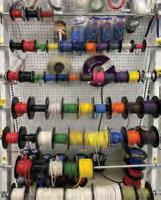








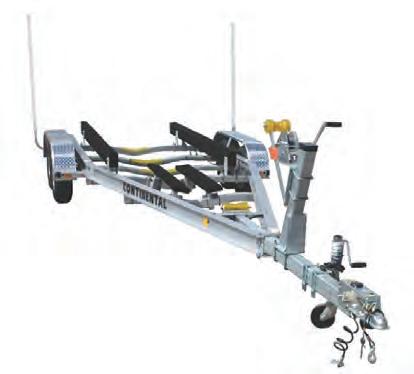






Fishing in the Everglades is always a blast, and sight-casting tripletails is one of the coolest challenges out there.
Tese fsh are unique with their three-tail look and tendency to hang out near foating debris. If you want to catch them, using live shrimp and spotting them is a great way to do it. Idle around and look for foating seaweed, as tripletails like to hang around that to camoufage.
Use polarized sunglasses to cut the glare and make it easier to spot them. Move slowly through these areas, keeping your eyes peeled, but fair warning— it’s not as easy as it sounds.
Once you see a tripletail, don’t rush in. Tey can be skittish, and sudden




moves or loud noises can scare them of. Drif toward them with the wind or current to avoid using your engine.
Tripletails love live shrimp, so get the liveliest, healthiest shrimp you can fnd. Hook them through the tail or behind the horn on their head so they stay active and attractive. Cast your shrimp past the tripletail and slowly bring it back toward them. Let the current make it look natural.
If the fsh is near the surface, just freeline it. If they’re deeper or the current is strong, add a little weight to keep the shrimp down. Sometimes it takes a while to fnd and approach tripletails, so don’t rush it.
Use light to medium tackle, 15- to 20-pound good since tripletails have sharp gill plates. Early morning or late a is usually best, since tripletails are more active and easier to spot then. should be around for the next couple of months of the summer.
Catching tripletail is truly a fun challenge that mixes the thrill of the hunt with the excitement of the catch. Whether you’re a fshing pro or just starting, targeting tripletails in the Everglades is an adventure you won’t forget.
If you are interested on getting on some Tripletail, book a charter with Bean Sportfshing, www.beansport
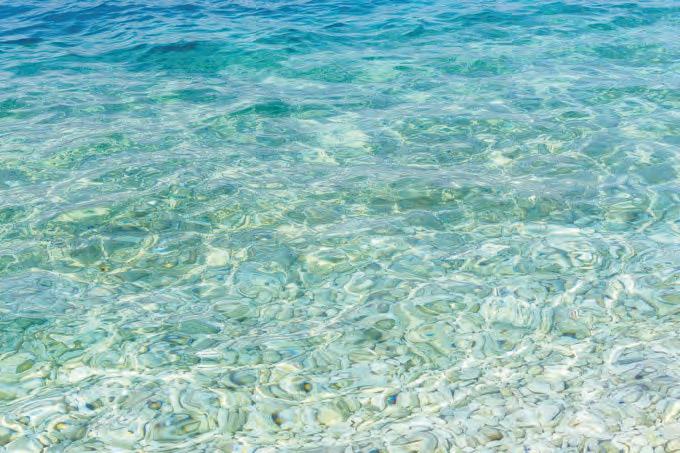






















During the 2023-2024 bonefsh spawning season, researchers with the Bonefsh & Tarpon Trust documented, for the frst time, bonefsh prespawning aggregation sites in Florida. Te frst was discovered in the Upper Florida Keys and the second is a suspected site found near Key West. Tese discoveries are a hopeful sign of continued recovery for the species afer a decades-long decline.
“Finding these nearshore areas where bonefsh school by the thousands before migrating ofshore to spawn in deep water is essential for their conservation,” said Jim McDufe, BTT President and CE0. “As our science team continues to identify these sites, we will work with our state and federal partners to ensure that they are protected, ensuring a healthy future for one of Florida’s most iconic fsh species.”
Over the course of the 2023-2024 bonefsh spawning season, which spans from October to April, BTT Florida Keys Initiative Director Dr. Ross Boucek and his team tagged 44 bonefsh with acoustic transmitters with the help of Florida Keys fshing guides. BTT scientists also deployed 37 acoustic receivers on the reef tract, which allow them to monitor bonefsh spawning movements.
“We documented seven spawning events during the 2023-2024 spawning season,” said Dr. Boucek. “Four bonefsh tagged with archival depth measuring tags spawned during these events; three of the four fsh recorded maximum depths of 332 feet, 310 feet, 302 feet. Te fourth fsh recorded a maximum depth of 180 feet on its frst possible spawning or false spawning attempt. Te recorded spawning depth of approximately 300 feet is consistent between the Upper Key spawning site and the suspected spawning site near Key West, and with recorded spawning events in Te Bahamas.”
During full and new moon cycles from fall through early spring, bonefsh








migrate 70 miles or more from their home ranges to nearshore pre-spawning aggregation sites, where they prepare to spawn by gulping air to fll their swim bladders. At night, they swim ofshore and dive hundreds of feet before surging back up to the surface. It is believed the sudden change in pressure as they ascend makes their swim bladders expand, causing them to release their eggs and sperm. Afer fertilization takes place, the eggs hatch in about 24 hours, and the larvae drif in ocean currents for between 41 and 71 days before settling in shallow sand- or mud-bottom bays, where they develop into juvenile bonefsh.
“Our long-term goals are to conserve the reproductive cycle of our growing bonefsh in the Florida Keys,” said Dr. Boucek. “We still need to know where spawning occurs across the Keys, what threats like habitat loss those spawning fsh might face, where their larvae go, and the habitats the juveniles need to ensure that our new population of bonefsh can reach their full potential.”
For more information, go to bonefshtarpontrust.org.
























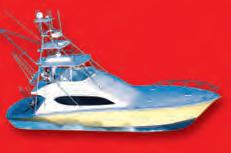









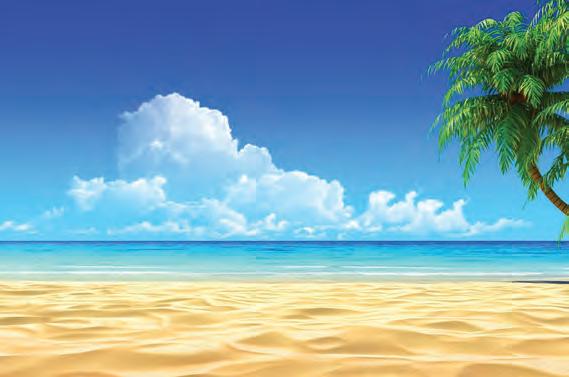

Regulations change and so do reporting and license requirements. Here are some things FWC wants you to remember before you head out on the water.
1. Get a License and Reef Fish Angler Designation
In addition to a fshing license, you’ll need a State Reef Fish Angler designation if you plan to target any of the following reef species: mutton snapper, yellowtail snapper, hogfsh, red snapper, vermillion snapper, gag grouper, red grouper, black grouper, greater amberjack, lesser amberjack, banded rudderfsh, almaco jack and gray triggerfsh.
Te State Reef Fish Angler designation is free and required for all anglers fshing from private recreational vessels for reef fsh. Tis includes anglers who are exempt from a regular fshing license. Tis free-of-charge designation is used to help fsheries managers improve recreational data of reef fsh, which helps improve the management of our fsheries.
Get your license and State Reef Fish Angler designation online at GoOutdoorsFlorida.com, in person at a license agent or tax collector’s ofce or by calling toll-free 888-FISH-FLORIDA (888-347-4356).
2. Know the Regulations
Know the regulations for the species you are targeting, as well as those you might catch incidentally, before you drop a line. When you reel in a fsh, you will know whether or not you can throw it in the fsh box.
Tere are also specifc reef fsh gear rules, such as using non-stainless steel circle hooks, a dehooking device and a descending device or venting tool. Check regulations in the area you plan to fshing by visiting MyFWC. com/ReefFishGear.
3. Have the Correct Release Gear
Quick and proper use of a descending device or venting tool can help fsh get back down to depth and improve their chance of survival. Such a tool must be onboard when you are targeting reef fsh, and you should know how to properly use it to alleviate barotrauma in fsh hauled from the depths.
Venting tools are sharpened, hollow instruments designed to release expanded gases in the swim bladder of fsh experiencing barotrauma. Knives, ice picks and hooks are not legal venting tools and ofen cause more harm to the fsh than good.
To learn more about barotrauma and how to use descending devices or venting tools, visit MyFWC.com/Barotrauma or check out ReturnEmRight.org/ BestPractices, where you could be eligible to receive free descending device gear.

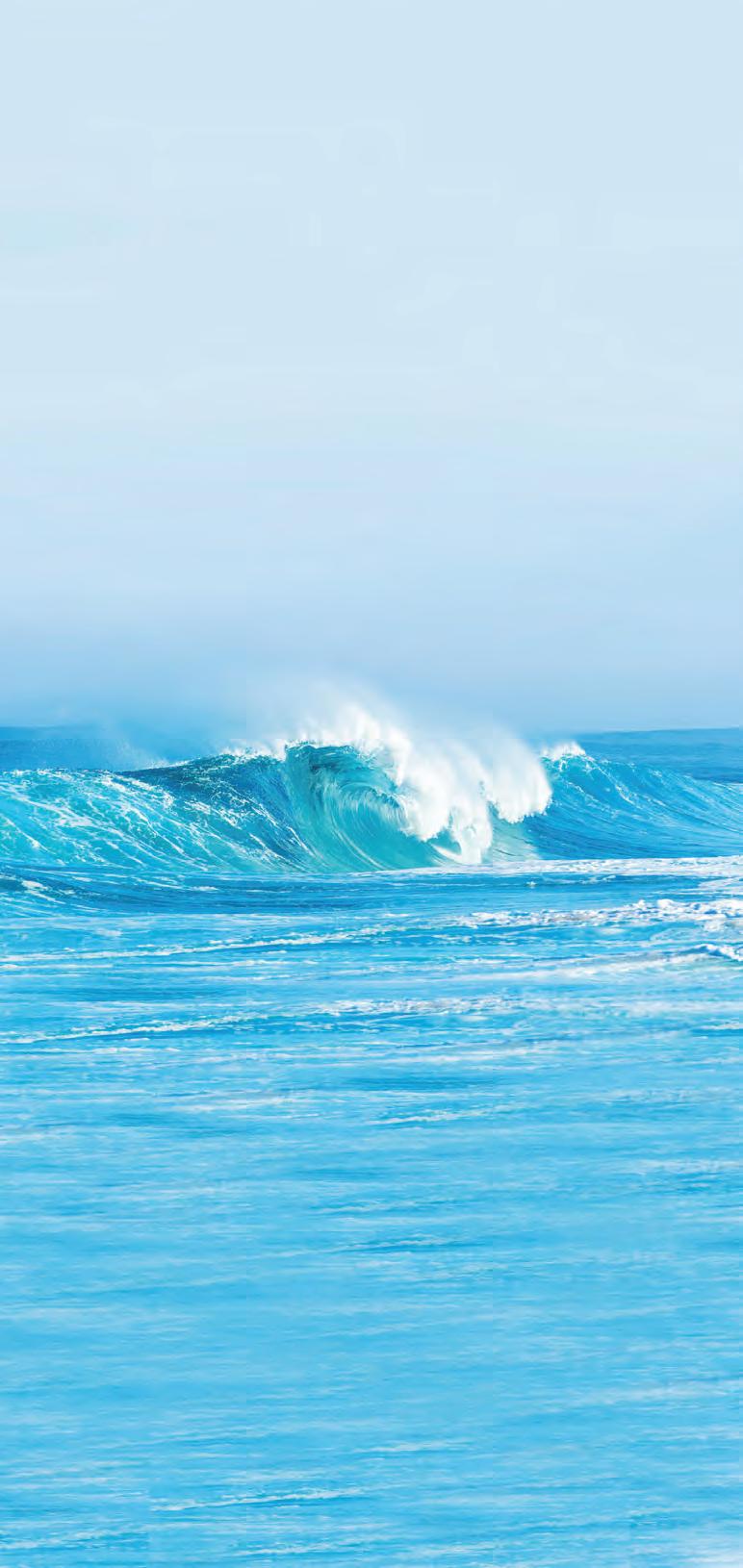


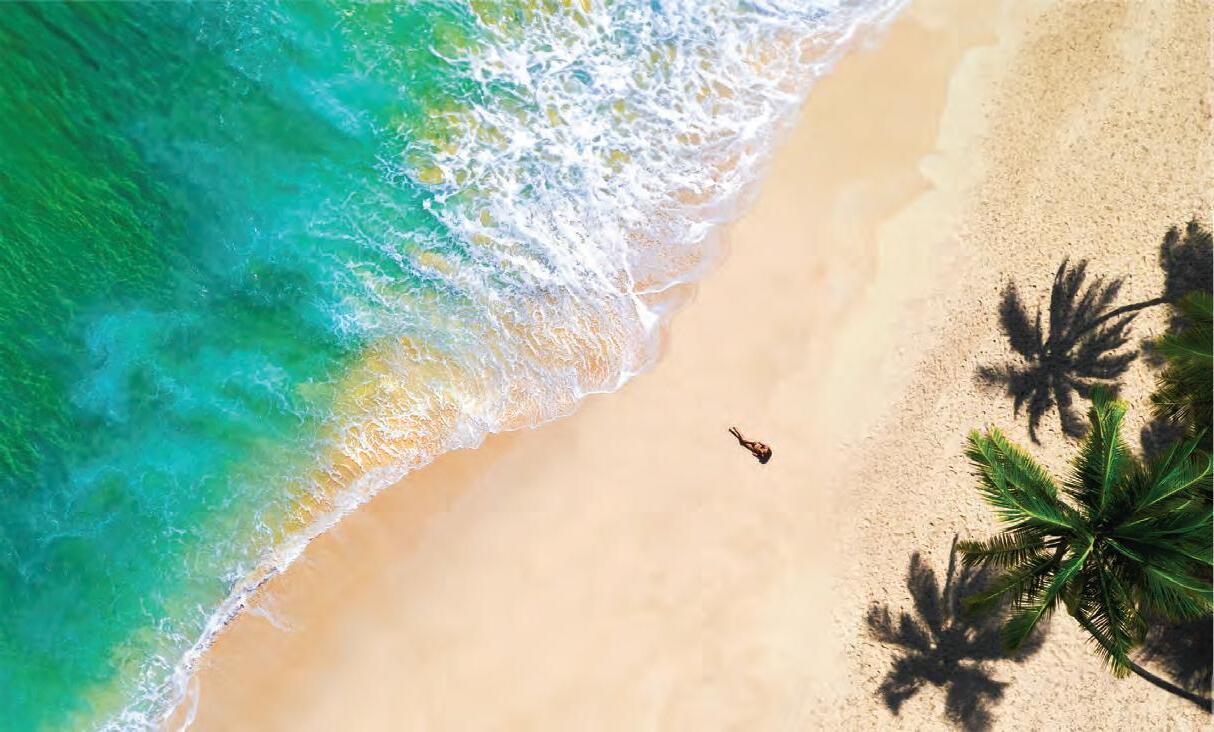
For the past two years, I’ve had the pleasure of taking Coastal Conservation Association’s Leiza Fitzgerald out on the water to assist in tagging dolphinfsh for the CCA STAR competition. As if going fshing wasn’t enough of a prize, recreational anglers can sign up for this competition, with a donation to a good cause, and participate in this fshing side quest for all sorts of epic prizes.
Tagging trips with Leiza are some of my favorite mahi trips. She is more excited about catching throw-backs than anything we put in the box. Each undersized mahi, and most of the keepers, are handled with care and released with some fancy new jewelry.
With her tagging gun locked and loaded and a towel to lay over the fsh’s eyes to calm them, Leiza carefully and quickly turns peanuts into prizes, and sends them on their way.
CCA Florida STAR presented by Yamaha is a summer-long event that invites anglers and non-anglers to participate and win prizes valued at almost $500,000, including boats, motors, scholarships and more. Te competition is currently live, and registration is open until Sept. 2.
“In the past nine years, it’s been amazing to see STAR participants support conservation and embrace the catch-photo format,” Fitzgerald
said. “Awarding nearly $4 million in prizes, with $900,000 specifcally awarded in youth scholarships to the thousands of statewide STAR registrants is exciting, but even more exciting is the awareness STAR has created for the conservation of our marine fsheries.”
Te 2024 STAR competition is comprised of eight divisions targeting inshore and ofshore species along with trash cleanup. Wherever your home waters are, there is a way to get involved.
Te most notable of the STAR competitions is for tagged redfsh. Te best opportunity to catch this year’s tagged redfsh will be in Citrus and Charlotte counties, STAR’s 2024 Destination Counties, which each have eight tagged redfsh in their coastal waters.

Six years ago, STAR initiated a tagged fsh division for ofshore anglers, the Tigress Outriggers and Gear Tagged Dolphin Division. Tis division ofers one winner a $10,000 cash prize or scholarship. Te frst STAR registrant who catches a STAR tagged dolphin wins.

Te tagged dolphinfsh were caught and released of the Florida Keys. Tese fsh will migrate up the east and west coasts, providing anglers a shot at recapturing one. Tere have only been two tagged dolphin recaptured in six years, and neither angler was registered in the competition. You have to be in it to win it!
Make sure to report any tagged fsh you catch, whether you are registered or not. Take photos, measurements, tag numbers and information, and note the location of recapture. You do not need to remove the tag if you are releasing the fsh.
Fish are very mysterious, and there is so much we don’t know about them. Te more data we collect, the better conservation we can provide.
Capt. Quinlyn Haddon; Sweet E’nuf Charters, Marathon, Florida Keys; @captainquinlyn; captainquinlyn.com; (504) 920-6342.
- $80 Entry (includes one year CCA membership)
- $40 Entry for current CCA members
- FREE for Youth
- Over 100 Days of Fishing
- $500,000 in Prizes & Scholarships
- Memorial Day Weekend to Labor Day










Fishing during the hot stale days of summer is ofen thought to be the toughest and slowest fshing there is. I am here to help with that.
Not only are the next few months an amazing time to catch fsh, they can also be the easiest time to pin-point patterns for big bass. Spawning bluegills are the key. Bass will set up around bluegill beds and feed heavily on an easy meal of bluegills that congregate in the shallows to spawn.
Whether you are an experienced tournament fsherman or someone who just gets out every once in a while to stretch a line, this pattern is easily found if you know what to look and listen for.
You heard me right, listen! Tere are many ways to locate bluegill beds, and my favorite way is to use my ears. When you get around bluegills feeding in grass or lily pads, you will hear distinct little popping sounds of small fsh sucking prey from the surface. When you hear this, you know you are in a productive area, and the big bass should be close by.
Another way to locate these areas is to use your eyes in shallow water. Bluegill fan

out an area on the bottom just like a bass when they spawn, but they do it in big groups and create a pattern on sand and hard bottom that looks like the surface of the moon.
If the water is even a little clear, you should be able to spot a bunch of odd craters and divots on the bottom even from a distance. Tis is typically in very shallow water, and bass use this shallow water to their advantage. Spawning bream make easy pickings.
If all else fails, or in murky water, I fnd these beds with my electronics. I idle around with side scan in 2 to 5 feet of water to locate crater patterns on my units and mark them with waypoints to come back and fsh later. Tis is a good way to locate beds that are less pressured, because they are harder for other anglers to fnd.
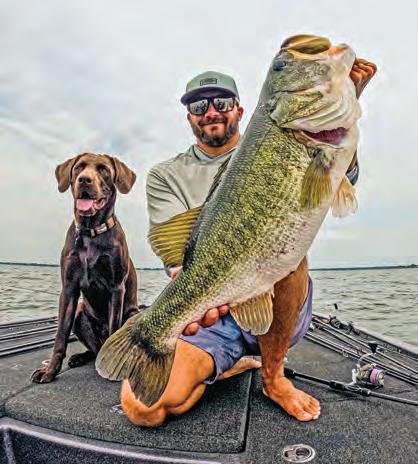
Tere are a few diferent baits I use to catch bass around these beds. Te most important thing is to stay as far away from these areas as you can, while still being able to get a cast into them. Be stealthy because shallow-water bass are skittish.
I like a bluegill-colored popping frog and also a bluegill-colored swim jig with a trailer to match. I’ll also throw a weightless wacky-rigged Senko and will put a little nail weight in the Senko when fshing deeper beds. A lightweight Carolina-rigged Trick Worm or a shallow-diving squarebill crankbait are two other good options. Hopefully this summertime bass tip helps you have a fun and productive day on your waters!
Tyler Woolcott is a professional tournament angler and guide. Check out his website at www.tylerwoolcottfshing.com.

When we inshore anglers gather around the dock, you can count on one or more of these being the topic of conversation: trout, redfsh, founder or snook. Seldom is it the sheepshead. Although they are not a species frequently targeted with lures, they can provide an aggressive bite and a worthy fght. Keeping them out of the structure they love is the real challenge.
 By Capt. Michael Okruhlik
By Capt. Michael Okruhlik
depending on the current, were all it took to place his shrimp in the strike zone. Te strike zone is typically as close to the structure as possible. If you notice the sheepshead swimming around, they always have their noses to the structure.
Te sheepshead is a fsh that my son had never caught until a few weeks ago. We took a trip to South Texas to view our second of four Starship launches at the SpaceX facility. Afer the excitement and rumble of the launch, we picked up some live shrimp, and he was soon rumbling with many sheepshead.
We set our sights on the Queen Isabella Memorial Causeway, as it has a nearly unlimited amount of structure ideal for attracting sheepshead. Using the anchor mode on our trolling motor made it easy to stay close to the bridge pilings where the sheepshead were congregated. My son especially liked targeting them because we were under the causeway and in the shade, as opposed to being out on the open fats where we typically fsh.
A small sharp hook and a split-shot or two,
I fnd that keeping your bait small helps attract the bite. It is benefcial to keep a tight line, as the bites can be very light. One tactic that served my son well was to walk toward the back of the boat and away from the structure once a fsh was hooked. Tis assisted in pulling it away from the structure. Trying to manhandle the fsh out on light tackle would certainly have led to some break-ofs.
Stay vigilant in checking your line for frays afer several casts and defnitely afer each fsh. Keeping a sharp hook will also help in landing more fsh because of their boney, teeth-flled mouths. Tis turned out to be an extra memorable fshing trip. We witnessed another historic space launch, and his catch landed him in second place for the Texas CCA Star Tournament with his sheepshead.
Tis is why I always say, take a kid fshing! Tey might win a college scholarship.
Capt. Michael Okruhlik is the inventor of Knockin Tail Lures®, and the owner of www.MyCoastOutdoors.com.


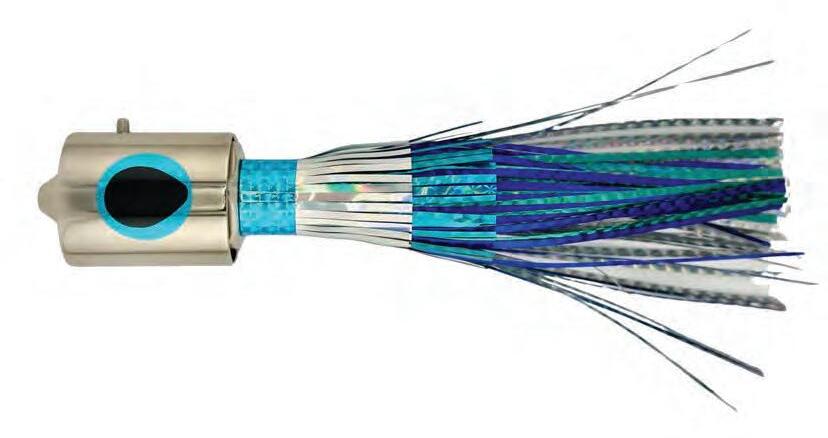

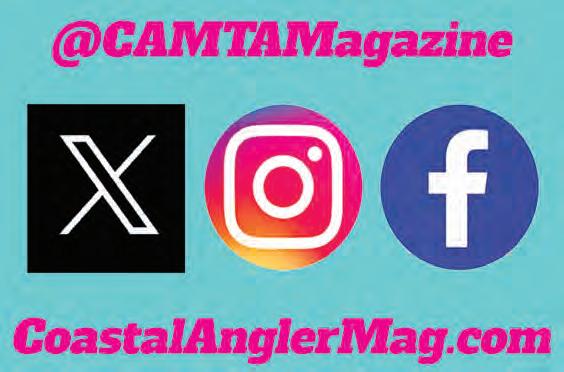
Amonster blackfn tuna caught during Te Miami Dolphins Fins Weekend tournament is an unofcial world record. Te 50.1-pound blackfn was certifed by an IGFA biologist, and it outweighs the existing IGFA all-tackle world record by a little less than three-quarters of a pound.
Angler Robert (Bob) Kowalski landed the huge blackfn aboard the 34’ Express Sportfsher Miss Britt, which was captained by Gareth Haddam and chartered by Pete Sinnick and his family. In addition to being a potential new world record, the fsh won the largest tuna division at the tournament and earned the team a $30,000 payout.

Te existing IGFA all-tackle world record blackfn tuna weighed 49 pounds, 6 ounces. It was caught in 2006 of Marathon, Florida Keys by Capt. Mathew Pullen. Fins Weekend is an annual fundraiser hosted by the Miami Dolphins. It is a two-day tournament with proceeds going to support the Baptist Health Orthopedic Institute Youth Athletic Outreach Program. For more information, go to bluewatermovements.com.


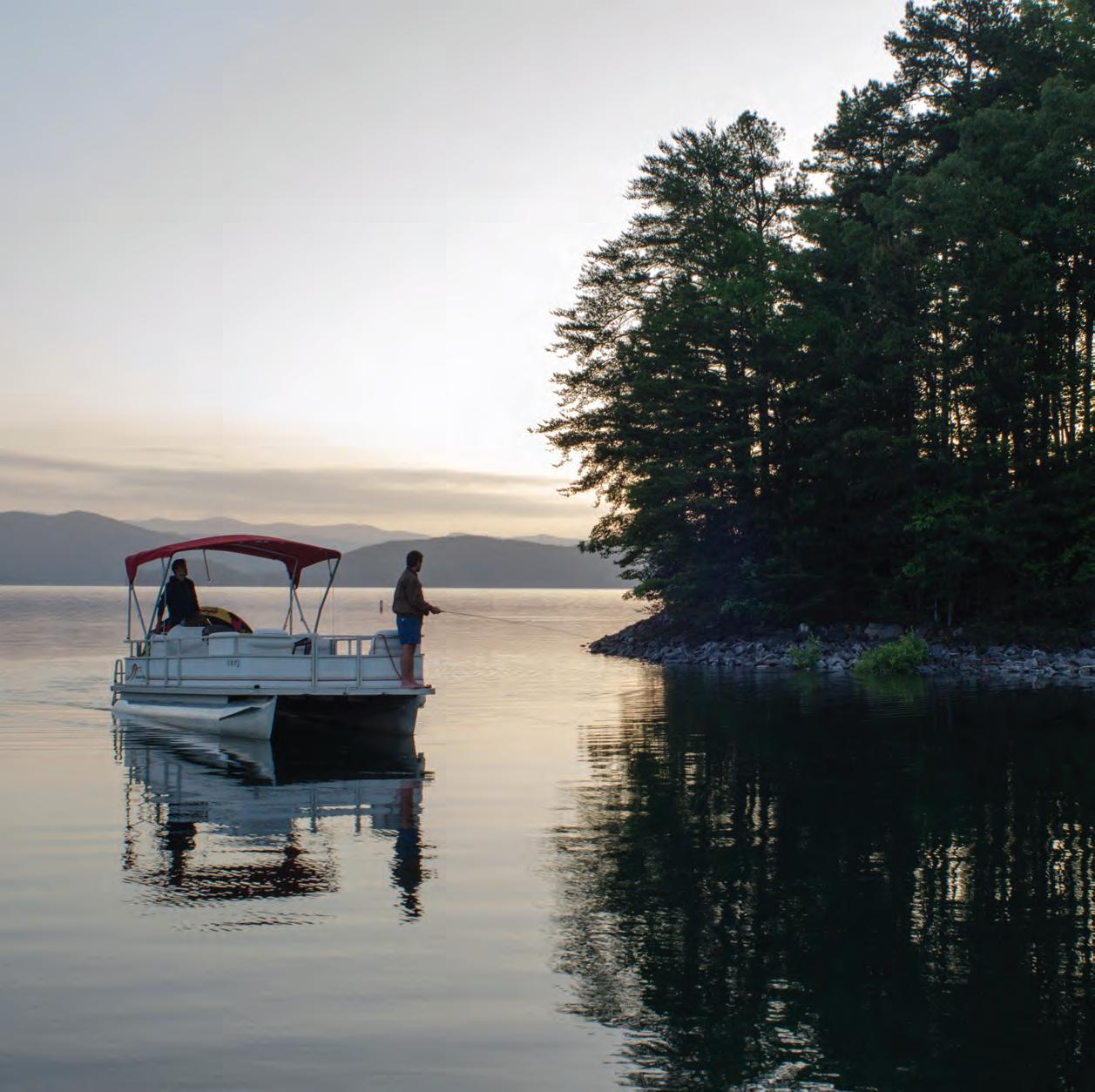







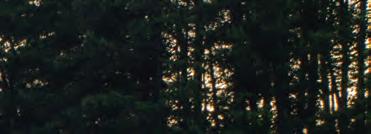






When it comes to growing giant largemouth bass, Texas has fgured some things out. Since 1986, the state’s Toyota ShareLunker program has conducted a breeding program using huge largemouths caught and donated alive by anglers. Tese donated bass, called Legacy Class, must be heavier than 13 pounds. Tey spawn in a facility before being released, along
with their ofspring, to spread big-fsh genetics across the state.
Te results of the program are apparent in the giant Texas bass caught each year. Many of them go right back into the breeding program, and the spring of 2024 was the fourth ShareLunker season in a row that the program has deemed exceptional.
Tis spring, anglers contributed 19 Legacy Class, 13-plus-pound bass from seven diferent Texas lakes. O.H. Ivie in west Texas is the best big-bass fshery in the country right now. It produced 12 bass heavier than 13 pounds this season, continuing a hot streak that goes back to the 2021.
Highlights from the 2024 Toyota ShareLunker collection season:
• Angler Kyle Hall’s 15.82-pounder was the 37th heaviest all-time Texas largemouth bass.
• Angler Kyle Hall has recorded a Legacy Lunker in three consecutive seasons.
• Six out-of-state anglers etched their name into the program’s record book. Te anglers hailed from Kansas, New York, Ohio, Oklahoma and Washington.
• Angler Larry R. Walker reeled in two Legacy Class Lunkers in 2024. State biologists did genetic analysis of this year’s Legacy Lunkers and made some incredible discoveries:
• ShareLunker 666, reeled in by Larry R. Walker from O.H. Ivie, was a recapture of ShareLunker 646 originally caught by Mechelda Criswell in 2023.
• A 13.2-pound fsh from Lake Athens was the ofspring of ShareLunker 552, which was caught by Randall E. Claybourne in 2014 at Lake Fork. Tis is the frst time a Legacy Class descendant from this family tree was discovered in the program.
• Of the 19 Legacy Class ShareLunkers, 13 had secondary relationships to either previous Legacy Class fsh or other ShareLunkers from which anglers submitted scale samples for genetic analyses.
• In the last fve years, the program has achieved an excellent overall fsh survival success rate of 94 percent.
Tat’s a lot of big-fsh genetics going back into Texas fsheries.
For more information, go to TexasSharelunker.com.


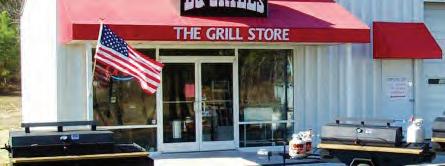













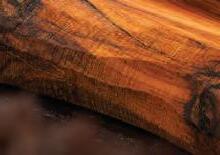


What Stauer Clients Are Saying About Our Knives

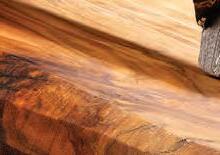
“Outstanding knife of high quality and a great price. I now have a number of your great cutlery in my growing collection!”
— Robert F., Richardson, TX






We know you. You’re not interested in everyday, run-ofthe-mill, common cutlery. You want something with a story, a unique feature that you can brag about. We’ve got just the thing for you. Our Mighty Conifer Knife is a unique tool with a Damascus steel blade and a handle crafted from an enhanced and stabilized natural pinecone. While our competitors are charging hundreds for similar knives, we’re offering the Mighty Conifer for JUST $99! Tat’s what we call our Stauer Impossible Price.
JOIN MORE THAN
PEOPLE WHO COLLECT STAUER KNIVES
Each pinecone — and therefore, each knife — has its own unique characteristics. And the back of the handle features hand tooling, a further demonstration of each piece’s individual nature.
Te blade is nothing to scoff at either. Constructed of Damascus steel, a modern reworking of the legendary steel forged by ancient swordsmiths, this nearly 5-inch blade features 256 layers of steel that have been folded on top of each other to increase its durability. Our competitors are charging hundreds for boring, run-of-the-mill knives with no features worth bragging about. We’re asking JUST $99 for a knife unlike any you’ve seen before!
With its full-tang construction and high-quality genuine leather sheath, the Mighty Conifer Knife is the perfect blade for the

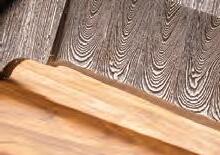


Impossible Price





person who wants to stand out. CALL NOW! If you’re one of the first 700 587 callers for this ad, we’ll throw in a pair of Stauer 8x21 Compact Binoculars — a $99 value — ABSOLUTELY FREE! Satisfaction guaranteed or your money back!
Knife Specifcations:
• 9 ½" overall length. Full-tang construction
• Damascus steel blade and natural pinecone handle
• Genuine leather sheath
Mighty Conifer Knife


EXCLUSIVE FREE
Stauer 8x21 Compact Binoculars a $99 value with your purchase






$299 $99* + S&P Save $200
*You must use Insider Offer Code: MCK186-01 to get this price. California residents please call regarding Proposition 65 regulations before purchasing this product.
1-800-333-2045
Your Insider Offer Code: MCK186-01

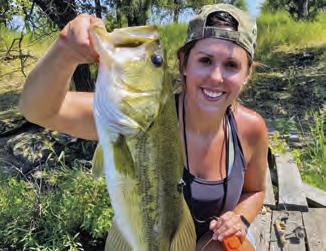





With more than 60,000 surface acres and 1,300 miles of shoreline, Grand Lake O’ the Cherokees is one of the largest outdoor destinations in Oklahoma. Located on the Grand River, the lake is hugely popular with boaters, fishermen, campers and anyone else who loves spending time in the great outdoors. Anglers are sure to have a blast searching for largemouth bass, white bass, crappie, channel catfish, bluegill and the rare paddlefish on Grand Lake waters. And Grand Lake’s shores are lined with so many unique attractions, shops, restaurants, state parks and casinos that seeing everything in one trip is next to impossible. There’s truly something for everyone to love in the Grand Lake Area!

Discover all the fun things to see and do in the Grand Lake Area as well as places to stay, places to eat, festivals and more at GrandLakeFun.com


